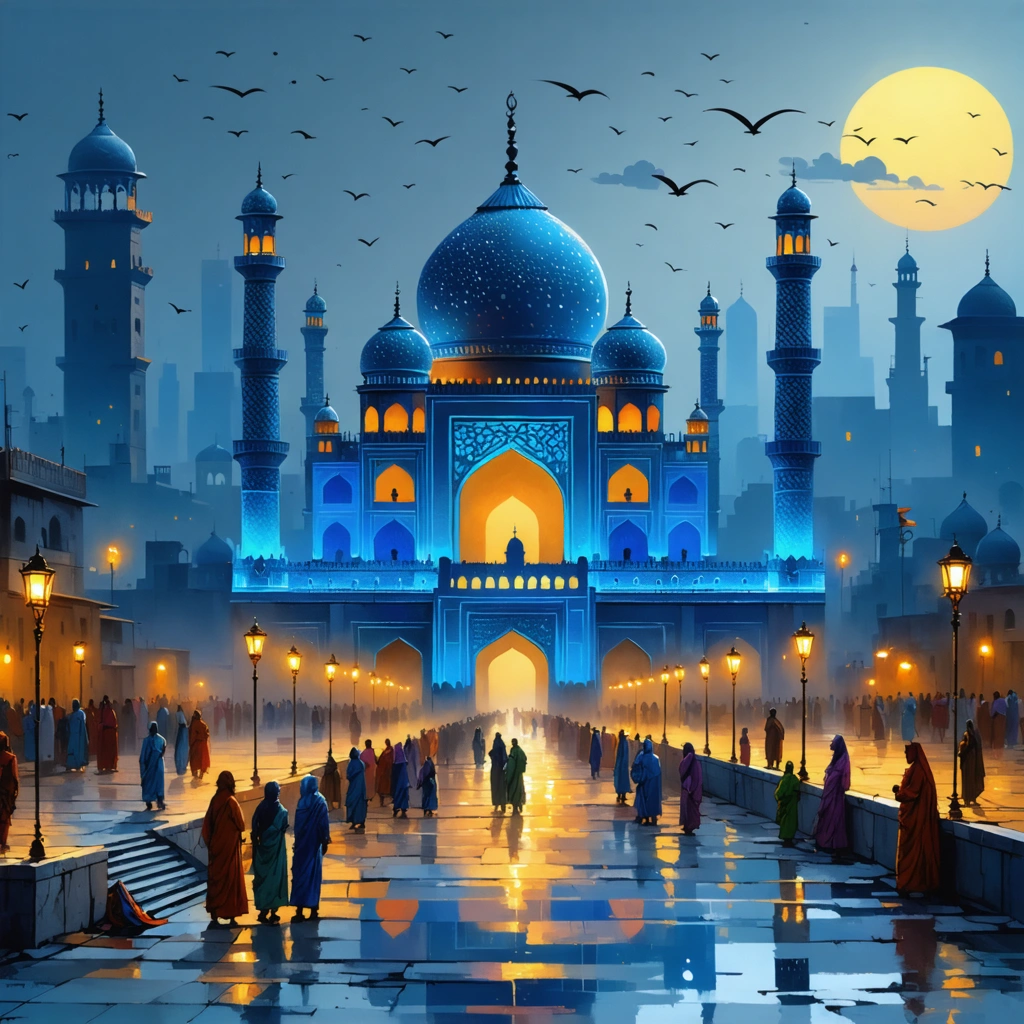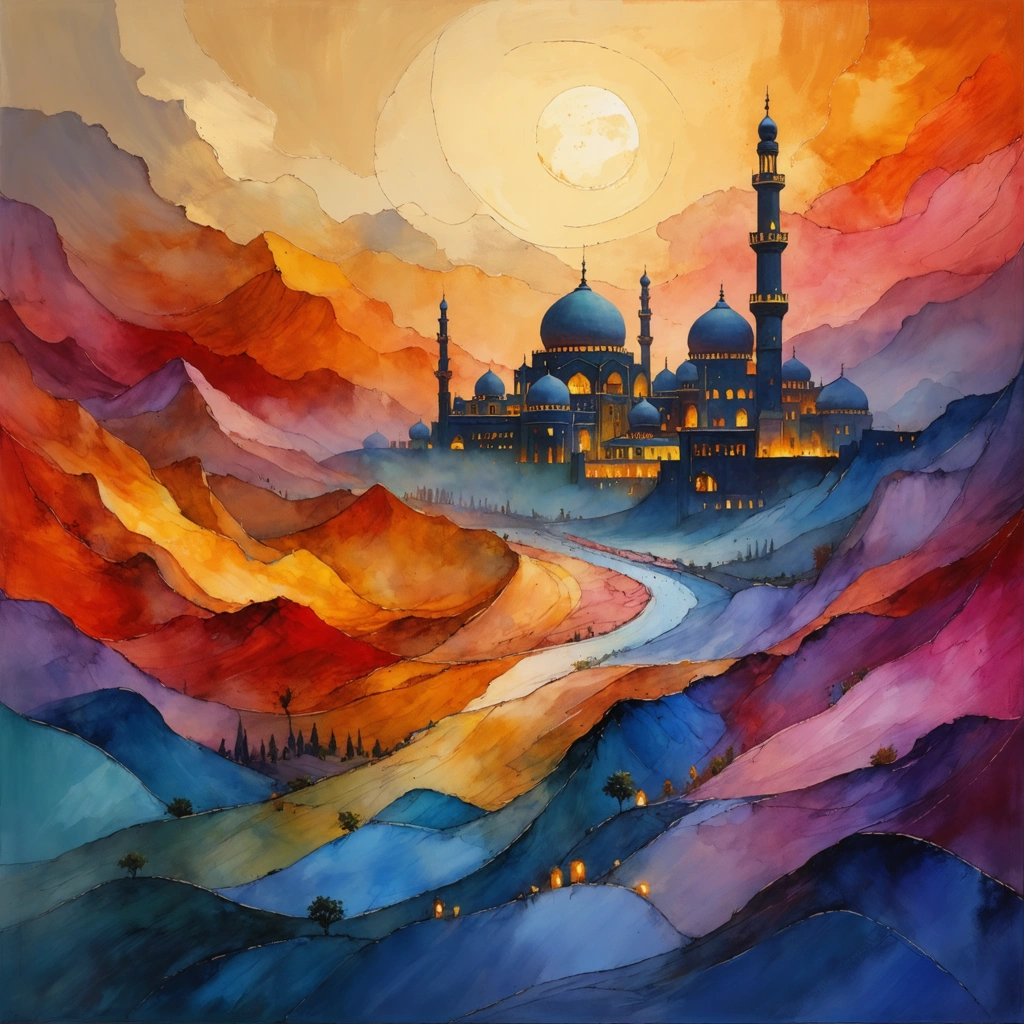
The Living Fabric of Faith: Why Understanding Islamic Rituals Matters Today
Imagine waking up before dawn in a bustling Indian city where the call to prayer gently weaves through the early morning air. For millions of Muslims across India, this serene moment marks the start of a deeply spiritual journey, one that involves centuries-old practices still vibrantly alive in 2025. But how many truly grasp the significance behind these rituals? What does it mean when someone recites the Namaz Ki Niyat before their prayers, or whispers the Sehri Ki Dua in Hindi as the sun slowly rises? And why is the act of performing Tahajjud Ki Namaz in the dead of night more relevant than ever in today’s fast-paced world?
Amidst the rapid modernization and the diverse cultural mosaic of India, the Islamic community continues to anchor itself in rituals that are both spiritual and social lifelines. Yet, a subtle disconnect is growing — not in faith, but in understanding. Many outside the community, and even some within, find these practices mystifying or overlooked, reducing centuries of rich tradition to mere routine. This gap in understanding can lead to misconceptions, stereotypes, or a fading appreciation of what these rituals truly represent.
Peeling Back the Layers: The Rituals Behind the Routine
To the casual observer, Islamic rituals in India might look uniform or static — a sequence of prayers, fasting, and festive celebrations. But beneath this apparent simplicity lies a profound tapestry of meaning, intention, and community bonding. Take the Namaz Ki Niyat, for instance. This is not just a formal declaration before prayer; it is the conscious setting of one’s heart and mind to connect with the Divine. The niyat (intention) shapes the quality of the prayer itself, transforming it from a mechanical act into a spiritual conversation.
Similarly, the Sehri Ki Dua in Hindi is more than an invocation before the pre-dawn meal during Ramadan. It encapsulates gratitude, hope, and the collective spirit of fasting. And the often quietly observed Tahajjud Ki Namaz — the voluntary night prayer — represents an intimate moment of solitude and reflection, a practice that many find increasingly necessary in a world filled with distractions and stress.
Yet, these rituals are not just individual acts; they are communal threads. They foster unity, provide rhythm to daily life, and offer a framework for navigating challenges — spiritual, social, or personal. Understanding these practices in depth helps bridge divides, nurture empathy, and celebrate the vibrant Islamic identity that colors India’s cultural landscape.
What This Article Will Explore
In the sections ahead, we will embark on a journey through the key Islamic rituals that are shaping India’s Muslim community in 2025. We’ll explore:
- The significance and nuances of Namaz Ki Niyat — why intention matters and how it influences worship;
- The heartfelt tradition of Sehri Ki Dua in Hindi — its meaning, variations, and role during Ramadan;
- The spiritual depth and contemporary relevance of Tahajjud Ki Namaz — how it sustains faith in turbulent times;
- Broader insights into how these rituals maintain communal harmony and personal resilience;
- Practical tips for those eager to understand or participate respectfully in these rituals.
Whether you belong to the Islamic community, are a student of culture, or simply curious about the rich mosaic of Indian traditions, this article promises to offer clarity, context, and compassion. By delving into these sacred practices, we not only appreciate their spiritual essence but also witness the living heritage of a community deeply woven into India’s social fabric.
So, let’s step beyond the surface and discover the rhythms and rituals that keep the heart of India’s Islamic community beating strong in 2025.

Islamic Rituals in India: Understand the Rituals Shaping India’s Islamic Community in 2025
What Are the Key Islamic Rituals Practiced in India in 2025?
India is home to one of the largest Muslim populations in the world, and its Islamic community is rich in cultural and religious diversity. The rituals practiced by Indian Muslims are deeply rooted in Islamic teachings but often blend with local customs. In 2025, these rituals continue to play a significant role in the spiritual and social lives of Indian Muslims.
Some of the most prominent Islamic rituals observed across India include the five daily prayers (Salah), fasting during Ramadan, special night prayers like Tahajjud Ki Namaz, and supplications such as Sehri Ki Dua in Hindi during Ramadan. Understanding these rituals provides insight into the faith's practice and the community’s identity.
How Is Namaz Ki Niyat (Intention for Prayer) Important in Daily Islamic Practice?
Namaz Ki Niyat, or the intention behind performing prayer, is fundamental in the Islamic faith. It is the mental preparation and dedication required before starting the Salah. Namaz is not just a physical act; it requires conscious intention to connect with Allah sincerely.
In India, Muslims emphasize Namaz Ki Niyat before each of the five daily prayers. This intention confirms that the prayer is offered specifically for Allah and not for any worldly gain. It reflects the spiritual mindfulness that is essential for the validity of the prayer.
Why is this so important? Islamic jurisprudence states that without a clear and sincere Niyat, the prayer may be considered invalid. Hence, teaching the correct Niyat is a fundamental part of religious education in Indian Muslim communities.
For example, in many mosques across Delhi and Hyderabad, imams begin prayer sessions by reminding worshippers of the correct Namaz Ki Niyat to ensure everyone prays with the right mindset.
What Role Does Sehri Ki Dua in Hindi Play During Ramadan in India?
Ramadan is a significant month for Muslims worldwide, and India’s Muslim community observes it with great devotion. Sehri, the pre-dawn meal before fasting starts, is accompanied by the recitation of Sehri Ki Dua in Hindi or Urdu, making the ritual accessible to a broader population.
Sehri Ki Dua is a supplication that asks Allah for strength and blessings throughout the day of fasting. In India, many families pass down the tradition of reciting this dua in the local language, such as Hindi, to help children and elders understand and internalize its meaning.
This practice highlights how religious rituals adapt to cultural contexts without losing their spiritual essence. It also fosters a sense of community and shared faith during Ramadan.
Statistics from a 2023 survey by the Islamic Cultural Foundation of India showed that over 70% of Indian Muslims prefer learning and reciting Ramadan duas, including Sehri Ki Dua, in their native languages, enhancing engagement and comprehension.
Why Is Tahajjud Ki Namaz (Late Night Prayer) Gaining Popularity Among Indian Muslims?
Tahajjud Ki Namaz is a voluntary night prayer performed after Isha and before Fajr. It holds special significance as a time of intimate communication with Allah and is believed to bring spiritual elevation and divine mercy.
In recent years, Tahajjud Ki Namaz has seen a rise in observance among Indian Muslims, particularly among youth and urban populations seeking a deeper spiritual connection. Various Islamic scholars and online platforms have emphasized its benefits, encouraging more people to integrate it into their routine.
Practicing Tahajjud helps believers develop discipline, patience, and tranquility—qualities much needed in today’s fast-paced world. Additionally, it is considered a powerful means for supplication, self-reflection, and seeking forgiveness.
Case studies from mosques in Mumbai and Lucknow show an increase in early morning prayer groups dedicated to Tahajjud, demonstrating a revival of this beautiful tradition.
How Do These Rituals Shape the Identity and Social Cohesion of India’s Islamic Community?
Islamic rituals like Namaz Ki Niyat, Sehri Ki Dua in Hindi, and Tahajjud Ki Namaz are not merely acts of worship but also pillars of community identity and social cohesion.
- Community Bonding: Rituals are often performed in groups, such as congregational prayers and Ramadan gatherings, fostering a strong sense of belonging.
- Cultural Integration: Using local languages in duas and religious education helps bridge religious practices with cultural realities, making faith more accessible.
- Spiritual Continuity: These rituals ensure the transmission of Islamic values and spirituality across generations, preserving religious heritage.
- Social Support: During Ramadan and other religious occasions, rituals encourage charitable acts, mutual assistance, and empathy within the community.
In essence, these rituals act as a framework around which the Indian Muslim community organizes its spiritual, cultural, and social life, adapting to contemporary challenges while maintaining faith traditions.
What Future Trends Can We Expect in the Practice of Islamic Rituals in India?
Looking ahead to 2025 and beyond, several trends are shaping the practice of Islamic rituals in India:
- Digital Empowerment: Use of apps and online platforms to learn Namaz Ki Niyat, Sehri Ki Dua in Hindi, and Tahajjud Ki Namaz, especially among younger generations.
- Language Localization: Increasing use of regional languages and dialects in religious education and rituals to enhance understanding and participation.
- Community Engagement: Growth of interfaith dialogues and community events centered on Islamic practices to promote harmony and mutual respect.
- Health and Spirituality Integration: Awareness around the health benefits of fasting and prayer times is encouraging more mindful observance of rituals.
These trends suggest a dynamic future where Islamic rituals in India will continue evolving, blending tradition with modernity while preserving their core spiritual meanings.
Conclusion
Islamic rituals such as Namaz Ki Niyat, Sehri Ki Dua in Hindi, and Tahajjud Ki Namaz are integral to the spiritual and social fabric of India’s Muslim community in 2025. They serve not only as acts of worship but also as vital expressions of identity, cultural adaptation, and community solidarity. As these rituals continue to evolve, understanding them deeply helps appreciate the rich diversity and devotion that define India’s Islamic heritage.

